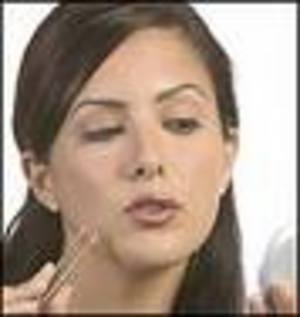We have about 5 million hairs on our body. Many post-menopausal women will swear that half of them have sprouted on their faces! These unwanted hairs are just one more curse we baby boomers face as we age.
Women view their face as an important part of their self image and unwanted facial hair growth can be very upsetting. Unwanted facial hair in women is a common problem. Facial hair usually begins to appear during puberty and becomes more prolific from the age of 35+. In older women it can become a problem as their formerly light-colored soft hair becomes coarser and darker and then, eventually, becomes very stiff, gray or white. The main areas for this hair growth is on the lip, chin, jaw, cheeks and neck areas.
Although this condition is a common problem of many women, it is seldom discussed in the primary care setting. Physicians generally neglect to address the problem unless the patient herself requests help. Many women are embarrassed and hesitate to discuss this with their doctors.
Sometimes, underlying medical conditions may be the cause of the hair growth. Unwanted facial hair can be caused by androgen and testosterone overproduction, increased sensitivity to circulating androgens, and other metabolic and endocrine disorders. Sometimes certain medications can cause increased hair growth.
Most times, however, unwanted hair growth in older women is a normal condition that comes with aging. It is very common for women to have an increased growth of hair on the face just before and after menopause. This type of hair growth is due to decreased estrogens. Sometimes it’s because of genetics and is passed down through generations. As the hairs become coarser and whiter, they are harder to see and many times go unnoticed. This can become an embarrassing problem.
Treatment options for removing excess facial hair are limited and can vary in effectiveness, degree of discomfort and cost. All have some adverse side effects. Here are several methods of removing unwanted facial hair:
Tweezing is the most common form of hair removal. This can be painful, especially if you have more than just a few stray hairs. It is not permanent and usually the hair grows back in two to eight weeks. Other side effects besides pain is folliculitis (infection of the hair follicle), irritation, hyper-pigmentation and scarring.
Shaving is another common method of hair removal. The hairs will return in one to three days. The side effects of this method includes chemical dermatitis, minor cuts, and a condition called pseudofolliculitis barbae which is the medical term for razor bumps.
Waxing is probably the easiest way to take care of unwanted facial hair. This method takes care of the hair for about 4 to 6 weeks. One of the drawback is that some women are sensitive to this procedure. It can also cause burns, pain, irritation, and sometimes, scarring.
Depilatory Creams can be used to remove facial hair effectively. The cream is applied to the hair, left for a few minutes, then it is wiped away with the dissolved hair. Individuals can be sensitive to the chemicals in the cream and it can cause chemical dermatitis or allergic dermatitis. The hair generally does not grow back for about 2 weeks.
Electrolysis is another popular method. This permanently removes the hair by an electric current that destroys the hair root. Each hair follicle has to be done individually so it can be costly and takes several treatments to complete. There is also considerable pain involved. Other side effects of this method include edema, redness and scarring of the skin, keloid formation, pigment changes and other skin irritations. Also this method cannot be used by patients with pacemakers.
Laser hair removal is another permanent hair removal method but it is costly and takes approximately six to eight sessions. This type of hair removal is specifically targeting the melanin in the hair bulb. The energy of the laser destroys the hair bulb. This method must be done by a licensed professional who is trained to do this procedure. One problem for older women is that gray or white hair is a poor target for laser. Generally, the coarse white and gray hairs of older women cannot be removed with this treatment.
Topical Eflornithine (Vaniqa) is the first topical medication for treatment of unwanted facial hair that has demonstrated success. Topical application has been shown to remove facial hair for as long as eight weeks after therapy is discontinued. It also improves the success of laser hair removal when the two are used in conjunction. If the medication is tolerated, it can be used as long as it is effective. Hair growth usually returns to pre-treatment levels within eight weeks of discontinuing the medication. The side effects of Eflornithine can include acne, redness and burning of the skin. It is also not approved for use by pregnant women and nursing mothers.
These are some of the most common treatments for the removal of unwanted facial hair. Women don’t have to live with unsightly facial hair any longer with the variety of treatments available today, but it’s important to find the method that works best for you. Please consult your physician or a good dermatologist.







